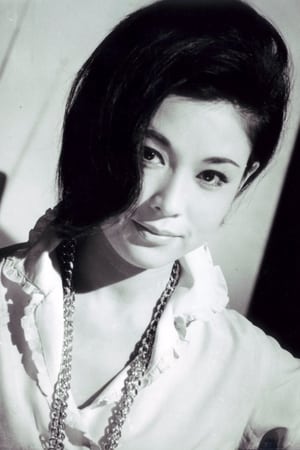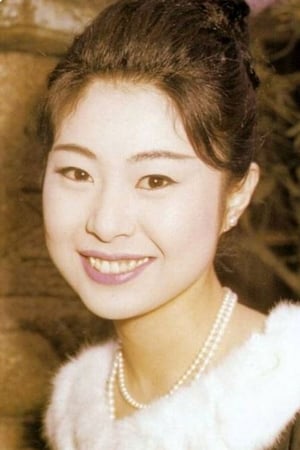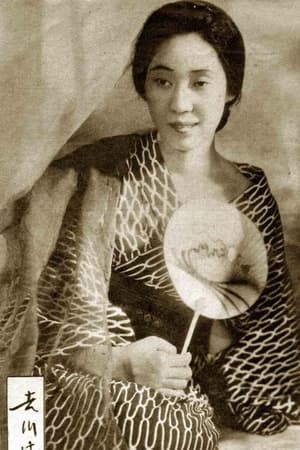
Aqueronte72
8
|
sep. 05, 2024
Masterpiece of the elliptical, unknown and psychological suspense of a troubled newlywed; The fascinating thing about this quiet gem is only appreciated by those of us who enjoy the subtext not only of the visual language, but also of the narrative; From the beginning, the beautiful Taeko seems destined for happiness, her wedding is rich in details such as harmony with the shamisen, but a few days later a slight detail makes her discover her husband Kunio with the maid who has been hired for her home; When she faces the husband's mother, she is horrified and hears the whole orchestrated plan to make him sexually happy - instead of constantly paying for the geishas, that is, prostitutes. As I said, all the weight of what is not said falls on the beauty of Ayako Wakao's expressions since we will never see explicit scenes that are rather cinematically sculpted not only in the performances but also thanks to the photography and music of a tense dramatic atmosphere and on many occasions enigmatic; We will not see scenes such as the bodies of the husband and the orphan maid Sei, but we will only hear the watering can and see their clothes. The silent scandal of that house of the Sayama family (well-off family thanks to the production of gold sheets) will have a setback when the beautiful wife, although submissive, receives the flattery of the fearful Guntaro. Guntaro cannot be clearer after helping her (not so much rescuing her in the snow) and explaining to her, almost stuttering with shyness, that he has always been poor like his father and almost died for 1 yen and now, the only thing that has changed is that he would die for 30 Yen. but he wants to love her not only for her charms but also for seeing her suffer with an unjust husband. He asks them to flee together to Osaka and just at that moment Kunio arrives and surprises them. The method of the drama is tortuous but effective, we do not know what Taeko is thinking while the husband saw Guntaro flee and repeats to her that he is sorry and the blah blah of liars.
We will only see, at the change of scene, that Taeko carries Kyota, the baby with her toy rattle resulting from her husband's infidelity with Sei and the grandmother next to her cheering on the newborn. Once again, Ayako's mysterious beauty is highlighted because her silence does not allow her forgiveness to be noticed. Your forgiveness? The maid Sei still lives in the same house and the baby is raised by Taeko and Kunio but we will soon see if Taeko has truly forgiven. I skip the scene of the snake in the yard while Sei is gardening and I stop at the moment when Sei was taking the doctor to check the child until a huge pile of snow falls from a ledge, crushing the mother and son. Kyota dies and Sei is in tears in the street while people are milling around, all the way back, at the back of the street, Taeko watches and before the scene fades out, she smiles with a discreet but perverse malice that makes this drama something exceptional. In this sequence it may not have been noticed, but in the following sequence of an accident, the explosion or fire of the Sayama house and the death of Kunio's mother-in-law, Kunio's mother in the same house at night, Taeko's expression seems to wonder (I said it seems , because I insist that what the characters feel or think is not said either with a monologue or voice-over from some omniscient narrator), Taeko seems to wonder if the revenge that she would have wanted and that did not take place is not being carried out by destiny. With these misfortunes accompanied by snowfall and finding herself involved in divine punishment, Sei resigns herself to grieve her guilt and leave, leaving Kunio and Taeko. There is a cut or rather chronological time jump and war comes to Japan. Then, Kunio feels that he has not reached the place he deserves due to the war and, then too, Guntaro will reappear in Taeko's life when she meets him again through trade;and Guntaro - being a businessman or businessman - confesses that the strange coincidence of fate made him meet his wife in Osaka. But he met her thanks to the fact that she, Taeko, did not escape with him as he asked and remained in the Sayama house before the misfortunes. The years continue to pass and Sei also returns to the story. Out of compassion or friendship, Taeko accepts her back to live with them. And this is where I emphasize the sagacity of a director like Misumi whose achievements - in my rustic understanding - did not go beyond action films like Zaitochi. If Misumi only hinted at the newly married Kunio's infidelity at the beginning, this time when it is assumed that there was already stability and so on, Taeko slides the door and the two bodies on it are evident, Sei, so the story repeats itself many decades later and it seems that the only one who has lost time, and a lot, of all the characters has been Taeko herself. And in fact, when the years pass and it seems that he will take seriously the business offer that Guntaro made him, Taeko discovers in the diary that upon his return Guntaro has suffered a brain hemorrhage and died. His funeral is announced in the newspaper.






